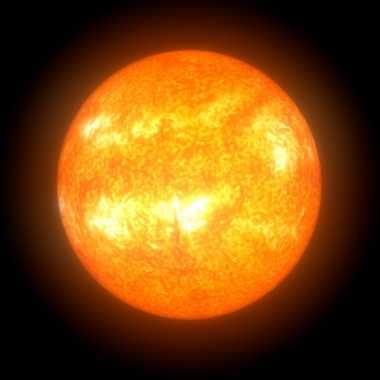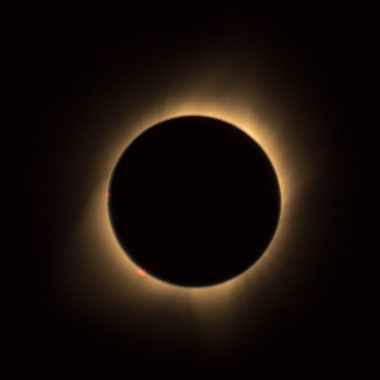Our solar system was formed 4.6 billion years ago by the collapse of a giant molecular cloud that had collected at its center to form the Sun and a flat disk of dust around it. This eventually forming all planets, moons, asteroids, and other bodies in our solar system.
Facts About The Solar System
- The hottest planet is not closest to the sun.
- There are so many objects in space that it’s hard to keep track of. We currently know of 194 moons, 3,583 comets, and 796,289 asteroids out there!
- The four smaller inner planets are the most fascinating in our solar system since they’re mostly composed of rock and metal.
- The gas giants are four of the largest planets in our solar system and they take up a lot more space than any other planet.
- The two innermost gas giants, Jupiter and Saturn have a hydrogen-helium composition.
- The ice giants, Uranus and Neptune are composed largely of ices. They’re the outermost gas planets in our solar system together called “ice giants”.
- The Sun is 99.86% of the mass in our solar system!
- The edge of the solar system is so far that it’s 1,000 times farther than Pluto.
- Even really small bodies sometimes have moons!
Solar System Objects

The solar system has many different types of objects, including stars, planets, moons, dwarf planets, comets, asteroids, gas, and dust. The numbers of each type of object are as follows:
| Age: | 4.6 Billion Years |
| Number of Stars: | 1 (The Sun) |
| Number of Planets: | 8 (Mercury, Venus, Earth, Mars, Jupiter, Saturn, Uranus, and Neptune) |
| Number of Dwarf Planets: | 5 (Pluto, Ceres, Haumea, Makemake, and Eris) |
| Number of Moons: | 194 moons |
| Number of Asteroids: | 552,894 asteroids |
| Number of Comets: | 3,083 comets |
| Diameter: | 18.75 trillion kilometers (11.65 trillion miles) |
The Sun is much larger than all the other planets in our solar system. In fact, it makes up 99.8% of everything that’s out there! Jupiter accounts for most of what’s left with its mass making up only 0.2%.
To discover more about the Planets and the Dwarf planets you can check out the relevant pages. Below we will cover the solar system and its structure.
Solar System Structure
The solar system is a great place to explore! There are so many different objects and events that you can learn about, but which one should you choose?
Solar System Objects & Events
What Does Solar System Mean?
When we say “solar system” it is important to break down the two words that make up this expression.
Firstly, The word “solar” is derived from an abbreviated form of the Latin words sol and ar. Which simply means “of the Sun”. Secondly, a system is just an assembly of objects that interact to form something. So when putting these two words together you get the soloing definition.
As a group, the solar system consists of many different objects that all interact with one another. The fundamental interaction for each object is how they relate to the sun.
How the objects in the Solar System interact
This is a fact that should not be missed. All objects in the Solar System orbit around the Sun, which means they all move along an elliptical path and do so at different speeds but are still orbiting nonetheless. Additionally, the orbits of these objects lie roughly in the same plane. This is called the ecliptic plane.
Gravity is the most important force in nature, and it helps to keep all objects orbiting our Sun. The natural tendency for objects in the Solar System is to continue on a straight line of motion, but they are constantly being pulled by gravity from the sun. This pulls them into an orbit around it. A larger object in the Solar System that exerts a significant gravitational force can alter an orbit of smaller objects. So for example, The Earth is such an intense gravitational pull that it can keep the Moon in orbit around itself.
The size of the Solar System
Many people mistakenly believe that the edge of our solar system is Pluto’s orbit, but this isn’t true.
Throughout the course of the 20th century, scientists hypothesized that our Solar System extends to almost 2 light-years, 125,000 times farther than Earth is from the Sun. It was also discovered in 2015 that there are many other objects beyond Pluto!
Scientists have just discovered that there are two major regions beyond Pluto. The first is the Kuiper Belt, a region of asteroids. The second one? That’s the Oort Cloud that has comets galore!
Formation of The Solar System
The following is the best-known account of how our Solar System came to be.
Where It All Began
At least 4.6 billion years ago, a large cloud of gas and dust was disturbed by something unknown. (It is believed that the disturbance could have been caused by a nearby supernova.)
As a result of this disturbance and the energy introduced to it, the cloud began moving. The movement of the cloud started to collapse in on itself because of its own gravity. The cloud began to rotate and heat up as it collapsed.
The cloud continued to collapse and its temperature constantly rose. The rotation of the clouds became faster and faster until eventually, it flattened out into a disk shape with the most mass at its center.
A Star Is Born
When the pressure and temperature became too hot, nuclear fusion began to take place. That’s when our star (Sun) was born!
The gases and dust from the outer region of our solar disk began to cool down, condensing into tiny particles.
As more and larger particles are created, they begin to collide with one another. The collisions cause the particles to stick together until eventually forming rocks or boulders of their own.
The Formation of Our Planets
The particles of dust and rock from the early solar system became so large they could be called “planetisimals.” This is because these larger bodies were made up of smaller, boulder-sized ones that collided.
When enough planet-sized masses joined together to form planetary embryos, these large objects were able to exert significant gravitational force on nearby objects.
This was because they had the mass of a whole planet – not just small particles and boulders. And unlike smaller rocky bodies that gathered in one area, planets collected other rocks around them due to their size alone.
So instead of random collisions between celestial entities there became more orderly movements like those seen today as asteroids orbit near Earth’s gravity well.
Once the material in each planetary embryo’s area was pulled together, planets were born.
The vast majority of materials that did not become the Sun or any other planets in our solar system condensed and formed into moons, asteroids, comets.
This is because the gravitational forces of these planets and other bodies stabilized. Their orbits became fixed over time, which created the solar system that we know today.









